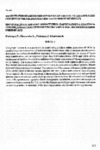Use este identificador para citar ou linkar para este item:
http://www.alice.cnptia.embrapa.br/alice/handle/doc/667258Registro completo de metadados
| Campo DC | Valor | Idioma |
|---|---|---|
| dc.contributor.author | PREISINGER, H. | pt_BR |
| dc.contributor.author | GASPAROTTO, L. | pt_BR |
| dc.contributor.author | FELDMANN, F | pt_BR |
| dc.contributor.author | LIEBEREI, R. | pt_BR |
| dc.date.accessioned | 2015-06-09T05:52:48Z | - |
| dc.date.available | 2015-06-09T05:52:48Z | - |
| dc.date.created | 1997-01-13 | pt_BR |
| dc.date.issued | 1995 | pt_BR |
| dc.identifier.citation | In: SHIFT WORKSHOP, 2., 1995, Cuiaba. Summaries of lectures and posters... Cuiaba: UFMT, 1995. | pt_BR |
| dc.identifier.uri | http://www.alice.cnptia.embrapa.br/alice/handle/doc/667258 | pt_BR |
| dc.description | The project concerns an experiment in recultivating a fallow rubber plantation of 19ha by establishing mixed plantations of selected crops, mainly trees. One of the main objectives is to determine the ecological conditions necessary for a sustainable land use, by testing diferent crop combinations and management types, two fertilization levels (30% and 100% of the recommended fertilizer dose) and inoculation of the plants with spores of Va-mycorrihizal fungi in the nursery. The experimental area conists of five blocks with eigtheen plots each to test four mixed cultivation systems, compared to four conventional monoculture systems. Fallow plots are being analysed for reference. The current scientific research is focused on the response of the useful plants to the test variants applied, the identification and control of plant diseases, the ecological role of mycorrhizal fungi in the field trial, the biomass production and nutritional element supply of selected useful plant species and the analysis of the structural and functional traits of the spontaneous vegetation due to management. In addition, economic and acceptance studies are being conducted to find out whether farmers are willing to apply the rested cultivation systems in practice. A summary of the most important results obtained so far is presented. | pt_BR |
| dc.language.iso | eng | eng |
| dc.rights | openAccess | eng |
| dc.subject | Brasil | pt_BR |
| dc.subject | Amazonas | pt_BR |
| dc.subject | Tropical rain forest | pt_BR |
| dc.subject | Reclamation | pt_BR |
| dc.subject | Sustainability | pt_BR |
| dc.subject | Micorrhizae | pt_BR |
| dc.title | Recultivation of abandoned monoculture areas in the Amazon: basic concept of the field experiment and summary of results. | pt_BR |
| dc.type | Resumo em anais e proceedings | pt_BR |
| dc.date.updated | 2018-12-13T11:11:11Z | pt_BR |
| dc.subject.thesagro | Cultivo Multiplo | pt_BR |
| dc.subject.thesagro | Deterioração do Solo | pt_BR |
| dc.subject.thesagro | Floresta Tropical Úmida | pt_BR |
| dc.subject.thesagro | Micorriza | pt_BR |
| dc.subject.thesagro | Pratica Cultural | pt_BR |
| dc.subject.thesagro | Recuperação do Solo | pt_BR |
| dc.subject.thesagro | Uso da Terra | pt_BR |
| dc.subject.nalthesaurus | environmental degradation | pt_BR |
| dc.subject.nalthesaurus | land use | pt_BR |
| dc.subject.nalthesaurus | multiple cropping | pt_BR |
| dc.format.extent2 | p. 153. | pt_BR |
| riaa.ainfo.id | 667258 | pt_BR |
| riaa.ainfo.lastupdate | 2018-12-13 -02:00:00 | pt_BR |
| dc.contributor.institution | EMBRAPA-CPAA | pt_BR |
| dc.contributor.institution | Institut fur Angewandt Botanik. | pt_BR |
| dc.contributor.institution | LUADIR GASPAROTTO, CPAA. | pt_BR |
| Aparece nas coleções: | Resumo em anais de congresso (CPAA)  | |
Arquivos associados a este item:
| Arquivo | Descrição | Tamanho | Formato | |
|---|---|---|---|---|
| p.153.pdf | 373,31 kB | Adobe PDF |  Visualizar/Abrir |









